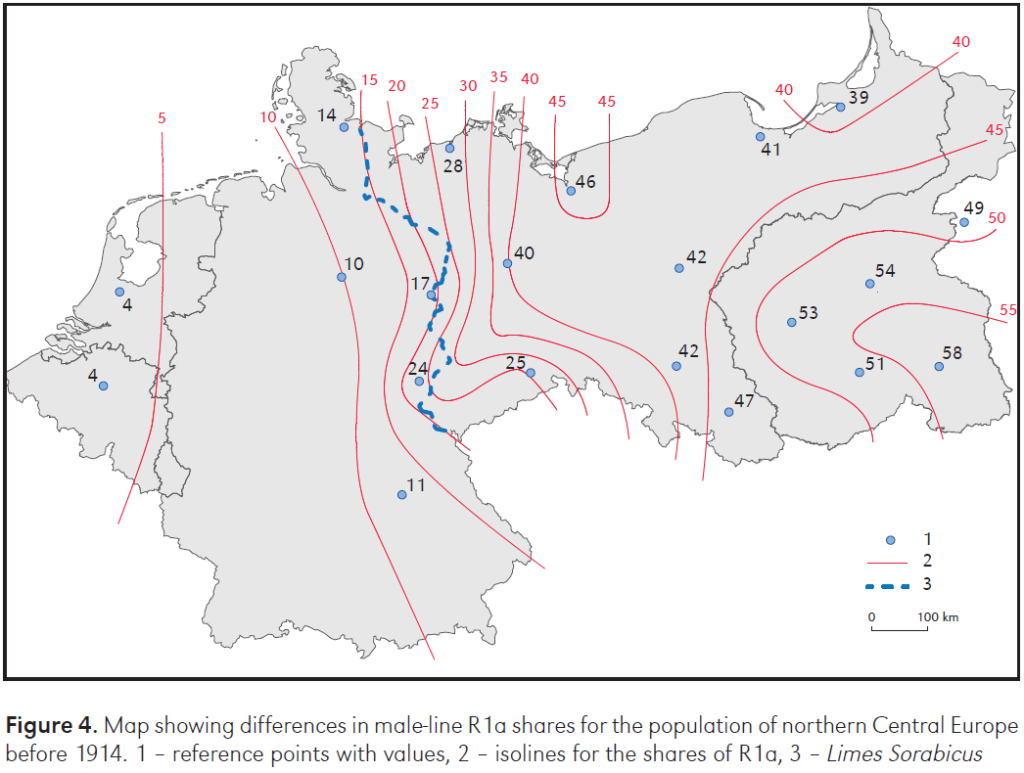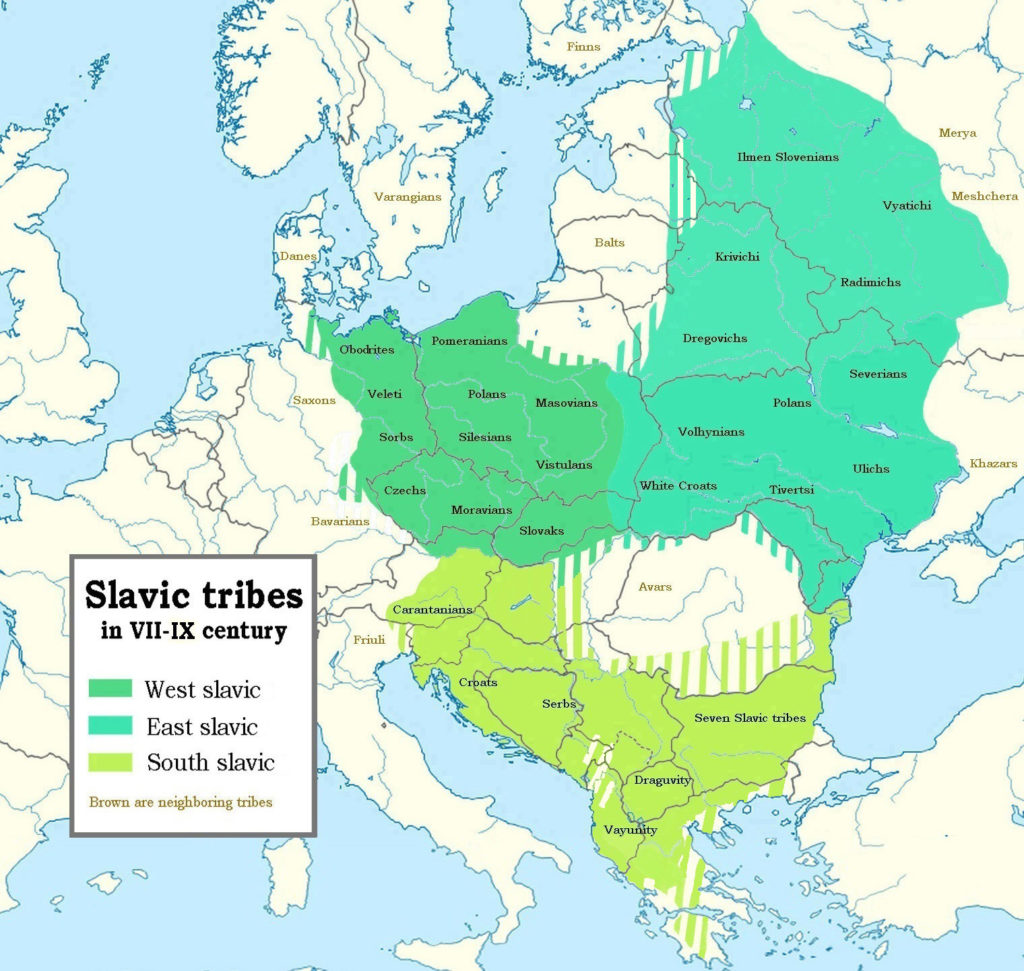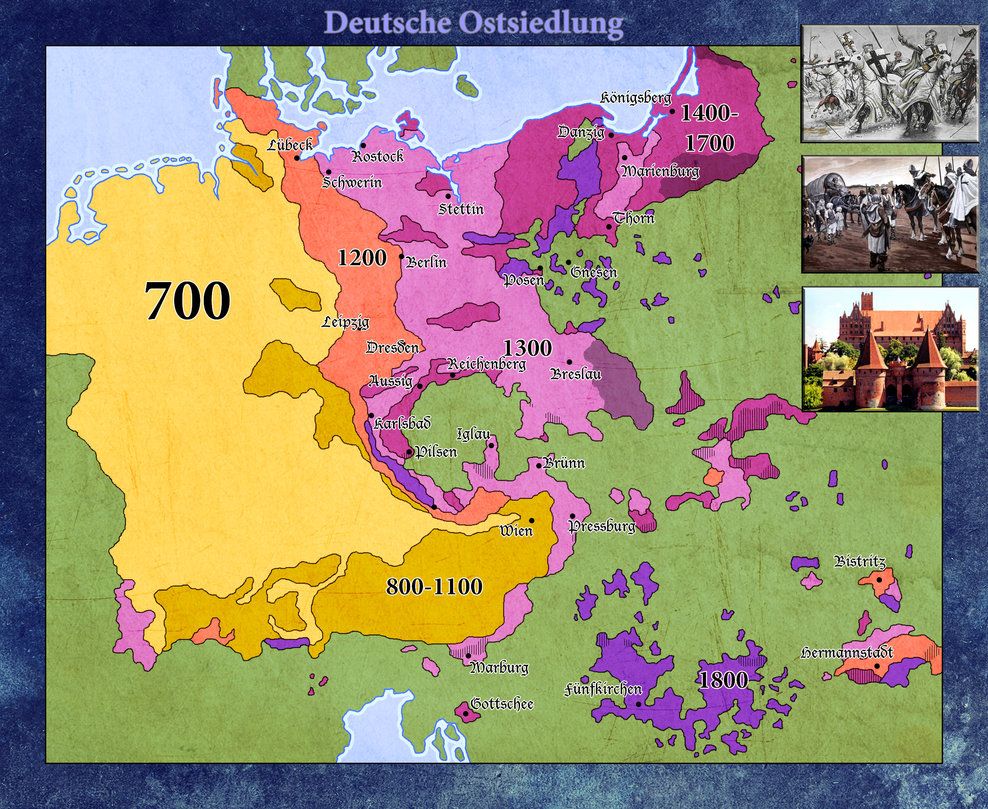My Big Y-700 test revealed that the Paul family paternal lineage is haplogroup R-YP263. But what does that mean? R indicates that the Paul paternal line is part of the large R haplogroup that emerged around 28,000 years ago, most likely in Central Asia. The R group diversified into two subbranches, aptly named R1 and R2, and by August 2020 nearly 2000 sub-subbranches, stems, and twigs on the R haplogroup phylogenic tree had been identified. YP263 is the name of the smallest subgroup, or ‘subclade,’ of haplogroup R for which I’ve tested positive so far.[1] R-YP263 formed around 2100 years ago in Central Europe and the haplogroup’s members share a most recent common male ancestor who lived around 1800 years ago. Its main geographic concentration today is in Poland and eastern Germany. Thanks to genetic genealogy we can say with real confidence that the Paul paternal line had existed for thousands of years in the very region from which it emigrated to the United States in the late nineteenth century.
In between R and R-YP263 are fourteen other branches. A few of these are major haplogroups about which a lot is already known. Two branches past R is R-M420, more commonly referred to as ‘R1a’. This genetic group is concentrated in a swath of territory stretching from northern India and Pakistan through Central Asia all the way to Central Europe and Scandinavia. In Europe it is most common among the West and East Slavs, with a relatively smaller but still notable presence among modern-day eastern Germans, South Slavs, Balts and Scandinavians. R1a is quite ancient, forming some 23,000 years ago during the last Ice Age probably in what is today Iran.
The second major branch of R1 is R-M343, better known as ‘R1b’. These two subclades of R1 are important in identifying the ancient origins of the Paul paternal line. R1b is the most frequently appearing lineage in Western Europe, while R1a is characteristic of Central and Eastern Europe. Across the North European Plain that stretches from Belgium and the Netherlands all the way to eastern Poland, there exists a clear east-west cline between these two haplogroups. In eastern Poland over 60% of men are R1a while only around 10% are R1b. In the Netherlands the situation is just the opposite, with 60% of men being R1b but less than 5% in the R1a haplogroup. One sees the same phenomenon within Germany itself, especially when using Y-DNA data matched with pre-World War One ancestral locations. Over 40% of German men from eastern regions such as Posen and Brandenburg were R1a while only 20% or fewer such men were R1b. The exact opposite was the case in regions like Lower Saxony in western Germany.
Historical and archeological research paired with Y-DNA research indicates this east-west cline between R1a and R1b is due to the ancient settlement patterns going back to the Late Roman Empire (late 200s to late 400s) and the Early Middle Ages (late 400s to 1100s). During the days of the Roman Empire, the North European Plain was settled by various Germanic tribes. Large parts of current-day Poland and eastern Germany became depopulated in the 400s as the Huns began invading Europe from the east and many Germanic tribes began moving west into current-day France, Spain and Italy to escape them. Following the death of Attila the Hun in 453 and the collapse of the Hunnic Empire not long thereafter, a period of relative peace returned to the North European Plain. In the 500s Slavic tribes began to migrate into the region and by 600 had settled up to the Elbe and Salle Rivers in what is today eastern Germany. In this region, R1a is characteristically Slavic while R1b is characteristically Germanic.
What does this say about the deep origins of the Pauls? Well, R-YP263 is not only within R1a but is also within R-M458, a subclade especially prevalent among the Poles and Sorbs, the latter being the last remnants of the so-called ‘Polabian Slavs’ who once dominated what is today western Poland and eastern Germany. Even further, the smaller and more recent subclade R-L1029, only two steps upbranch from R-YP263, is particularly associated with the Lechite tribes, the ancestors of modern-day Poles and Sorbs as well as the extinct Polabians and Pomeranians. Does this mean the Pauls are ‘originally’ Polish? Eighteen centuries ago when R-YP263 first emerged there were no such people as the ‘Poles.’ Nor for that matter were there such people as the ‘Germans’; both groups formed near the end of the Early Middle Ages. That being said, it is very likely that one thousand years ago the Pauls were indeed Western Slavs living somewhere between the Elbe and Oder Rivers whom the neighboring Germans generally referred to collectively as ‘Wends’.
How did this transformation from Wend to German occur? Beginning in the 1100s, German settlers began migrating eastwards across the Elbe as part of the famous German Ostsiedlung (‘east settling’). Some Slavs were absorbed through marriage into these new German settlements. Many more were assimilated into German culture over time, especially as the Holy Roman Empire expanded its political control eastwards. It is impossible to say exactly when the Paul paternal line became Germanized. We can guess that before Karl Paul married in the Polish village of Święcia in 1844, his paternal ancestors had come from Brandenburg (we make this guess because before World War Two, Święcia was a “Märker” village, i.e. it was settled predominantly by emigrants from the Mark of Brandenburg). Some Slavs of this eastern region of Germany continued speaking their own language into the 1700s, and the Sorbs continue to exist as a distinct people even to this day. All we can say is that it is highly likely the Pauls were Slavs who became Germanized sometime after the 1100s.
Of course, the Germans weren’t the only ones assimilating others. The Wends had almost surely incorporated some eastern Germanic peoples after their own great migration of the sixth century. Genetic research has linked R-L1029 to both the Vandals, an ancient Germanic tribe who once lived in modern-day southern Poland, and the Chernyakhov culture, the people from whom most researchers believe the Slavs emerged in what is today Ukraine and Belarus. The Vandals themselves were a mixture of Germanic Scandinavians who had migrated across the Baltic sometime in the 100s BC and the pre-Slavic natives who had preceded them in central and southern Poland. While most of the Vandals moved westwards in the late 300s AD, a small Vandal rump had remained behind and was eventually incorporated into the Western Slavs.
All things considered, perhaps the best short label for the deep roots of the Pauls is ‘Germano-Slavic’. The long description, of course, is tied up with the complicated and intertwined history of these two great cultural groups stretching over 2000 years.
[1] As of May 2021, I still haven’t been matched with any men in any of the several more narrow YP263 subclades already identified by DNA testing. Thus it is more accurate to say that the Paul haplogroup is R-YP263*, with the ‘star’ meaning ‘more specific haplogroup yet to be determined’. Hopefully as more men do DNA testing, a more specific group will be found from which the Pauls originate.
SOURCES
P. M. Barford, The Early Slavs (2001).
Mariusz Kowalski, “The early medieval Slav-German border (Limes Sorabicus) in the light of research into Y-chromosome polymorphism in contemporary and historical German populations,” Geographica Polonica (2020).
Csaba-Barnabás Horváth, “How Eurasia was born – A provisional atlas of prehistoric Eurasia based on genetic data supporting the farming-language dispersal model,” International Relations Quarterly (2021).
“R-YP263,” YFull.
“Haplogroup R1a,” Slavic haplogroup R1a and I2a-Dinaric/Slavic [blog].
“Vandals,” Migration Period between Odra and Vistula.
“Vandals – A Slavic Tribe or not?” Slavic Chronicles [blog].
 Haplogroup R1a cline map of the countries of the North European Plain showing pre-World War One borders and locations of Y-DNA test results at FTDNA. Notice the tightness of the isobars in the region near the Elbe-Saale line indicating it was a transition zone between Germanic (low R1a) tribes to the west, Slavic (high R1a) to the east.
Haplogroup R1a cline map of the countries of the North European Plain showing pre-World War One borders and locations of Y-DNA test results at FTDNA. Notice the tightness of the isobars in the region near the Elbe-Saale line indicating it was a transition zone between Germanic (low R1a) tribes to the west, Slavic (high R1a) to the east.
 The location of the major Germanic tribes on the North European Plain during the Roman era. The Vandals are marked in dark green.
The location of the major Germanic tribes on the North European Plain during the Roman era. The Vandals are marked in dark green.


